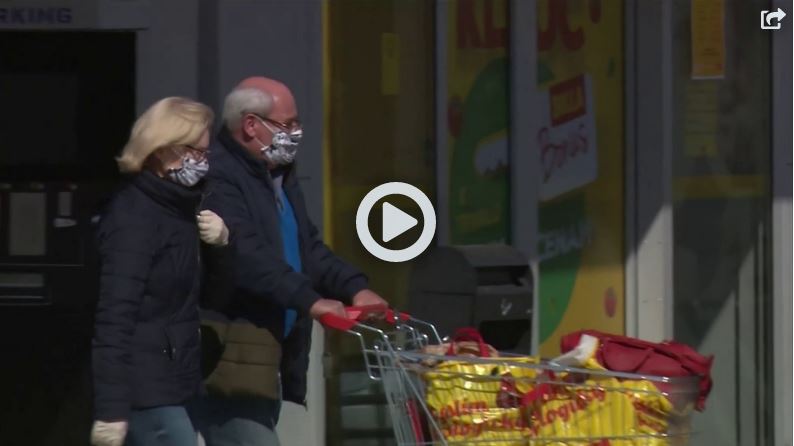The COVID-19 pandemic has people worried and looking to protect themselves and their families. Despite social distancing orders, people have to do essential errands like go to the grocery store, pick up prescriptions at the pharmacy, or check on elderly loved ones. There is some confusion on how to best protect yourself and slow the spread of the virus. When you walk into a store today, you’ll see people wearing masks and gloves. Some people wear just a mask – some people wear nothing. So, who’s right and who’s wrong?
Days after the Centers for Disease Control recommended wearing masks out in public during the Coronavirus outbreak, the World Health Organization announced there is no evidence supporting the idea that wearing a mask will prevent healthy people from getting COVID-19. With two reputable and trustworthy institutions offering conflicting advice, it’s no wonder that people are unsure.
To help clear any misconceptions, Dr. Ravi Raheja appeared on News4Jax on April 12 to educate the community on best practices.
Masks: Who Should Wear Them and How to Clean Them
COVID-19 spreads through droplets – some very tiny – generated when an infected person coughs or sneezes, or through droplets of saliva. There’s even some evidence that it may spread through breathing or talking, through what we call ‘aerosols’. Aerosols are infectious viral particles that can float around in the air for up to three hours.
Masks help safeguard you from these droplets or aerosols. They do not just protect you; they also protect the community. If you are an asymptomatic carrier of the virus, wearing a mask can keep other, more vulnerable populations from contracting it from you. Therefore, even if you are young and healthy, you should always wear a mask out when social distancing is not possible. Young children, toddlers, and babies should stay at home if possible.
There are two common types of masks you will see out and about right now: disposable paper masks and cloth masks. Though masks may help, it’s important that you handle them properly. Don’t allow the mask to give you a false sense of security; you still need to practice social distancing and proper handwashing.
Mask Best Practices:
- Always wash your hands for at least 20 seconds before picking up and putting on your mask
- Always put your mask on before you arrive at your destination. If you put your mask on after you have entered a store and touched things, you’re negating the benefits
- Make sure the mask covers your nose and your mouth. Some people do not cover their nose because it is uncomfortable, but it is important you do so
- Make sure to pinch the metal strip above your nose with all disposable masks – it will give you better protection
- When taking the mask off, do not touch the area where you breathe. Hold the straps or strings
- After you take off the mask, either dispose of it or wash it in hot water and dry on high heat
Gloves: Should You Wear Them?
Because the Coronavirus can adhere well to plastics and live up to three hours on its surface, it’s not recommended to wear gloves to the grocery store. If you touch something in the store that has viable Coronavirus particles on it and continue about the store touching other things, you could spread it and cross-contaminate other objects.
The best solution is to sanitize your hands regularly and wash your hands well after leaving the store. Remember to disinfect doorknobs, keys, and any other surfaces you regularly come in contact with when you leave the house.
If you are determined to wear gloves to the store, be sure to take them off carefully:
- With the first hand, pinch the plastic from the top of the wrist and pull up until the glove is off and inside out. No outside surface of the glove should be showing.
- Hold the first glove in your second hand, which is still covered.
- For the second glove, pinch the plastic at the top of the wrist from the inside of the glove and pull up until the second glove is also inside out and encasing the first glove.
- Throw away the gloves in an appropriate receptacle.
- Wash your hands thoroughly.
Understanding how to use protective gear correctly during the Coronavirus pandemic will help you keep your family and community safe. But remember, the best safety measure is strict social distancing.
Watch the segment to see Dr. Raheja demonstrate these practices.






